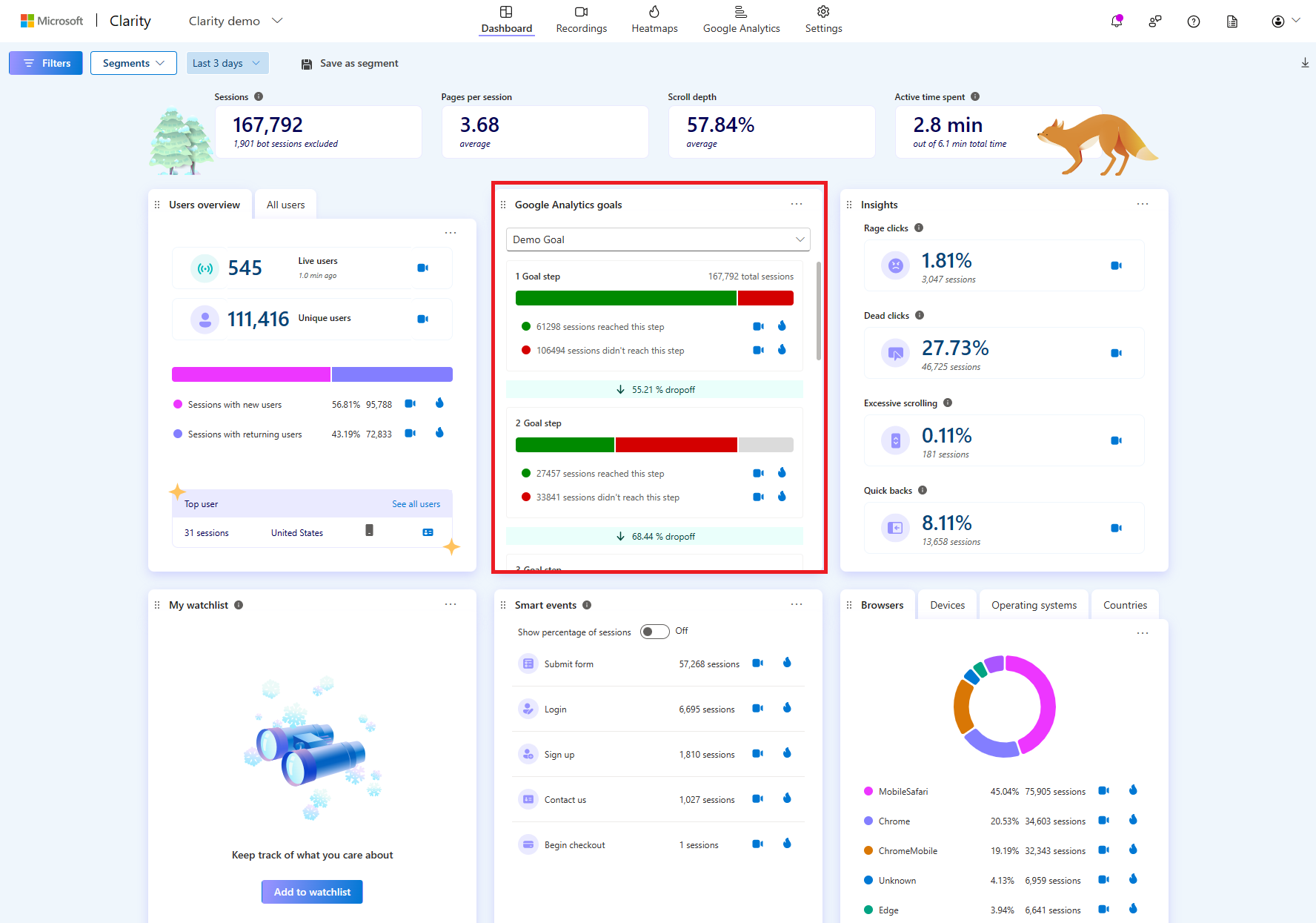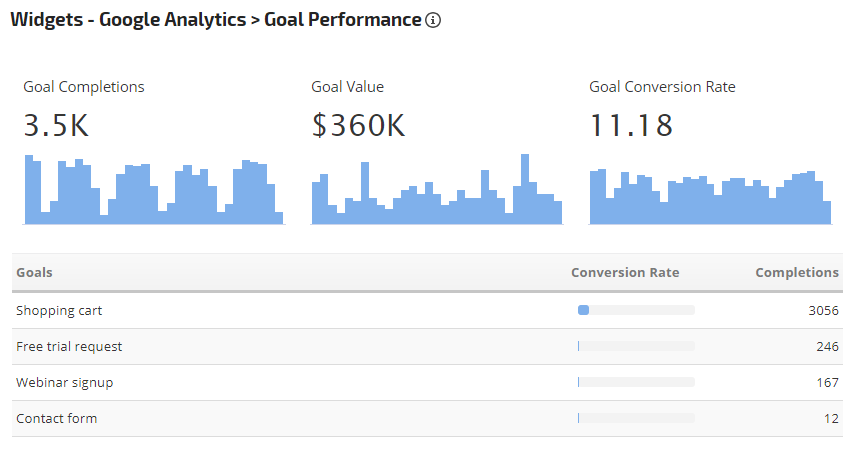Key Insights on What Data Is Google Analytics Goals Unable to Track
Key Insights on What Data Is Google Analytics Goals Unable to Track
Blog Article
Discover the Limitations of Google Analytics Goals: Introducing the Data Kind That Remain Untrackable
As companies increasingly depend on data-driven decision-making, comprehending the constraints of devices like Google Analytics comes to be vital. While Google Analytics Goals offer useful insights right into user communications, there exist data kinds that thwart tracking, posing difficulties to a detailed understanding of individual actions.
Insufficient Customer Trip Tracking
Incomplete individual trip monitoring within Google Analytics can hinder the capacity to precisely assess individual habits. When the user trip is not totally tracked, there are voids in the data that prevent a thorough understanding of just how users connect with a website. This lack of insight can cause missed opportunities for optimization and enhancements to the user experience.
One common problem with incomplete customer trip tracking is the inability to see the complete path that customers take previously finishing a goal or leaving the site. Without this info, it is testing to determine where users might be experiencing barriers or rubbing points that avoid them from transforming. Furthermore, incomplete tracking can obscure the influence of particular marketing initiatives or internet site modifications on customer habits.
To resolve this restriction, it is crucial to set up proper monitoring devices within Google Analytics to capture the entire individual trip. This might entail establishing event monitoring, objective funnels, or utilizing tools like Google Tag Manager to make certain that no vital interactions go unrecorded. By obtaining an extensive sight of the customer journey, website owners can make even more educated decisions to boost customer engagement and drive conversions.
Attribution Difficulties
Navigating via acknowledgment difficulties in Google Analytics needs a detailed understanding of exactly how different touchpoints add to the total conversion process. Attribution obstacles arise from the complexity of modern client journeys, where users communicate with numerous networks before converting. Google Analytics supplies different attribution designs like first touch, last touch, and straight, each supplying a different viewpoint on exactly how credit rating is designated to touchpoints along the conversion path. These designs may not constantly properly reflect the true effect of each touchpoint on the conversion.
One typical acknowledgment obstacle is the problem in associating conversions to the correct source, particularly in situations where users communicate with several networks prior to converting. This can result in errors in identifying which advertising and marketing efforts are driving one of the most conversions. In addition, cross-device tracking presents an additional acknowledgment difficulty, as individuals often change in between tools during their trip, making it challenging to track their interactions flawlessly. Online marketers must thoroughly translate and examine acknowledgment information to make educated decisions and maximize their marketing methods successfully.
Offline Conversions
Provided the difficulties related to connecting conversions precisely in online channels, the dimension of offline conversions provides a significant chance for marketing experts seeking an extra comprehensive understanding of their clients' journey. Offline conversions describe activities that consumers take in the real world, such as making purchases in brick-and-mortar shops or over the phone, going to events, or engaging with printed materials - what data is google analytics goals unable to track. These conversions are vital for services that run both online and offline, as they offer beneficial understandings right into the performance of advertising and marketing campaigns throughout different touchpoints
Tracking offline conversions traditionally posed a significant difficulty for online marketers, as it was testing to connect these actions back to particular on-line communications properly. Nevertheless, with improvements in innovation, such as the assimilation of CRM systems, special identifiers, and voucher codes, organizations can now connect the void between online and offline information to acquire a much more holistic sight of customer actions. By successfully measuring offline conversions, marketers can enhance their strategies, designate sources extra efficiently, and eventually enhance the total consumer experience.
Cross-Device Monitoring
Cross-device tracking plays an important role in understanding the interconnected nature of consumers' digital communications throughout numerous devices. In today's omnichannel world, where customers Visit Your URL seamlessly switch between tablet computers, desktop computers, and smartphones, tracking their actions throughout these tools is crucial for online marketers to acquire a comprehensive view of their consumer trip.

In addition, privacy issues and regulations such as GDPR and CCPA have further challenging cross-device tracking. With individuals requiring even more control over their information and raised constraints on tracking modern technologies, marketing experts must discover ingenious and privacy-compliant methods to link customer communications throughout tools.
Dynamic Web Content Engagement
Understanding individual engagement with vibrant web content is pivotal in optimizing electronic advertising and marketing approaches for enhanced target market interaction. Dynamic material describes site elements that change based on user habits, preferences, or various other elements, using a personalized experience. However, tracking individual interactions with dynamic web content presents difficulties for standard analytics tools like Google Analytics.
While Google Analytics can track fundamental interactions like clicks and page views, it may struggle to catch even more nuanced involvements within dynamic web content. what data is google analytics goals unable to track. Metrics such as time invested in details vibrant elements, hover activities, or communications within pop-ups are frequently not quickly quantifiable utilizing conventional tracking methods. This limitation impedes marketing experts' capability to fully comprehend how customers are engaging with reference vibrant content and tailor their approaches appropriately

Final Thought
In verdict, Google Analytics objectives have limitations in tracking incomplete customer trips, associating conversions precisely, recording offline conversions, tracking cross-device interactions, and determining vibrant content involvement. These restrictions highlight the importance of discovering additional monitoring approaches and tools to acquire an extra detailed understanding of individual behavior and conversions past what Google Analytics can give.
While Google Analytics Goals offer useful insights right into user communications, there exist data kinds that elude tracking, presenting difficulties to a thorough understanding of individual actions.Incomplete individual journey monitoring within Google Analytics can impede the ability to properly assess customer habits. When the individual journey is not fully tracked, there are gaps in the data that avoid a thorough understanding of just how customers connect with a site.One usual issue with insufficient customer journey monitoring is the failure to see the complete course that users take before finishing an objective or leaving the website. By obtaining an extensive view of the customer journey, site proprietors can make more educated choices to enhance customer interaction and drive conversions.
Report this page